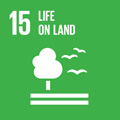- Docente: Stefano Del Duca
- Credits: 6
- SSD: BIO/01
- Language: English
- Moduli: Stefania Biondi (Modulo 2) Stefano Del Duca (Modulo 1)
- Teaching Mode: In-person learning (entirely or partially) (Modulo 2); In-person learning (entirely or partially) (Modulo 1)
- Campus: Bologna
- Corso: Second cycle degree programme (LM) in Sciences and Management of Nature (cod. 9257)
Learning outcomes
At the end of the course, students will have acquired knowledge on the main morphological, physiological and molecular responses of higher plants to environmental cues and the basic mechanisms of tolerance and adaptation to adverse conditions. They will learn about how plants contribute to air quality by the release of biotic particulates and by interfering with air pollutants derived from anthropogenic activities. Due to changes in plant distribution in relation to climate change, students shall become acquainted with the contribution of alien species to the release of such biotic particulates. Students will also learn about methods employed in aerobiology for the quantitative and qualitative assessment of pollen and other air-borne allergens. They will gain the capacity to interpret data and critically read scientific literature relating to this topic.
Course contents
PLANT INTERACTIONS WITH GLOBAL CHANGE
Modulo 1 Role of native and alien plants on air quality (3 CFU)
Synthetic description of plant anatomy and cytology. The adaptive strategies of plants to different environmental conditions. Alien plants. Aerobiology. Pollen and pollination. Main airborne bio-allergens: pollens and fungi. Food allergens of plant origin and respiratory allergens of pollen origin. Role of plants as organisms able to monitor the environmental quality and to influence it through the release of aero-dispersed biological material such as pollens. Possible use of plants in environmental phytoremediation
PLANT INTERACTIONS WITH GLOBAL CHANGE
Modulo 2. Plant resilience to environmental stress (3 CFU) = 24 ore
The course will deal with the main responses of higher plants to environmental cues and basic mechanisms of tolerance and adaptation to adverse conditions.
- Introduction to plants and abiotic stress factors associated with climate change.
- Overview of abiotic stress responses in plants at various levels: morphological, physiological, biochemical, and molecular.
- The role of compatible solutes in preventing damage under stress conditions.
- Oxidative stress, ROS homeostasis, and the importance of enzymatic and non-enzymatic antioxidants.
- Responses and management of salinity stress in plants.
- Symbiotic interactions between plants and soil microorganisms under environmental stress.
- Plant hormones: definition, classes, modes of action and involvement in abiotic stress.
- Gene expression and environmental changes
- Involvement of microRNAs, transcription factors, and epigenetic changes in stress responses.
- Abiotic stress and secondary metabolites, including VOCs.
Readings/Bibliography
Articles in international magazines
Teaching methods
Lectures
Assessment methods
Multiple choice test with 5 questions; each question contains 4 answers, among which the student must select the correct one (s); then follows a question about the program
Written presentation based on recent scientific article inherent to course topics and oral discussion
Teaching tools
Power point lessons will be available online -IOL
Office hours
See the website of Stefano Del Duca
See the website of Stefania Biondi
SDGs



This teaching activity contributes to the achievement of the Sustainable Development Goals of the UN 2030 Agenda.
